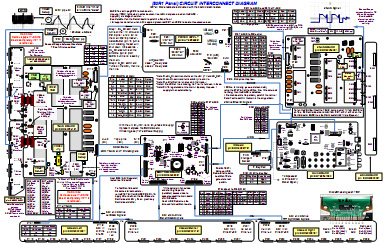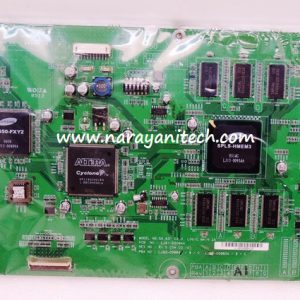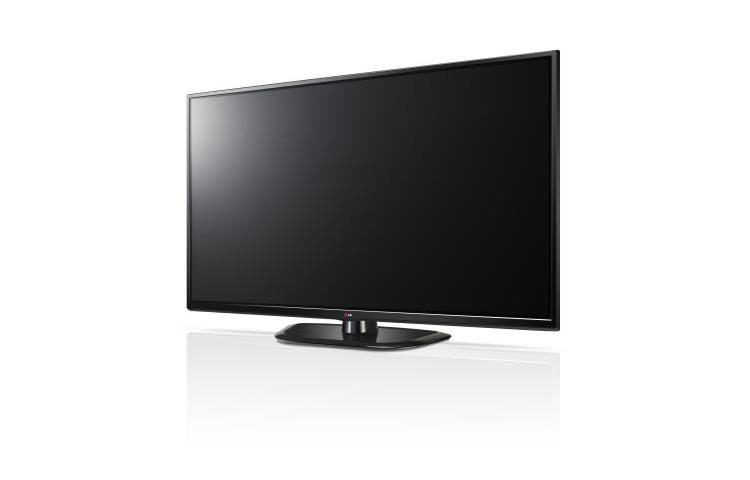A plasma television, or plasma display panel (PDP), is a type of flat panel display that uses small cells containing plasma - a gas that consists of ions and free electrons - to produce images. Plasma TVs were once very popular, but have largely been replaced by LCD and OLED displays in recent years. However, they still have some advantages over these newer technologies, such as wider viewing angles and faster refresh rates, which make them suitable for certain applications.
One of the main components of a plasma TV is the plasma display panel (PDP), which is made up of thousands of tiny cells called plasma cells. These cells are filled with a mixture of noble gases, such as neon and xenon, and small amounts of other elements, such as mercury. When an electric current is applied to the cells, the gases ionize and produce ultraviolet (UV) light, which excites the phosphors that coat the inside of the cells. The phosphors then emit visible light, which is used to create the images that are displayed on the screen.
Another key component of a plasma TV is the front glass panel, which is made of a special type of glass that is resistant to breakage and scratching. The front glass panel protects the PDP from damage and also helps to improve the overall picture quality by reducing glare and reflections.
The driving electronics of a plasma TV are responsible for supplying the electric current to the cells and controlling the display of images on the screen. These electronics consist of a number of components, including the power supply, which converts the incoming AC power into the DC power that is needed to operate the PDP; the display controller, which generates the signals that are used to drive the PDP; and the memory and processing chips, which store and process the data that is used to create the images.
Other important components of a plasma TV include the speakers, which are used to produce sound; the tuner, which is used to receive and decode television signals; and the various connectors and ports, which allow the TV to be connected to other devices, such as DVD players, cable boxes, and gaming consoles.
In summary, a plasma TV is a complex device that is made up of many different components, all of which work together to produce high-quality images and sound. While plasma TVs are not as common as they once were, they still have some unique features that make them suitable for certain applications, and they continue to be a popular choice for many consumers.
Plasma TV Repair Information

Still, QLED TVs are known to be more maneuverable, durable, and boast the ability to create true blacks for higher-quality picture composition. Many factorsare taken into consideration when deciding between the various HDTVs available in the market. No matter what kind of plasma TV components you are in the market for, though, you simply cannot beat our competitive prices. Two incompatible standards could not coexist for home use, and today the Sony Betamax system is. However, in the moments leading up to that, and even the moments following, the maneuverability of the type of TV you choose is highly important. High Definition Television HDTV : High Definition Television is a TV with a high screen resolution of 1920×1080 pixels, 16:9 display aspect ratio and the color depth is often at least 8 bits, allowing for sharper images and richer colors.
The Components of TVs

The most obvious components of a TV are the ones you can see. Important elements in plasma include albumin, coagulation factors, fibrinolytic proteins, immunoglobulin and other proteins. Plasma televisions may contain heavy metals, such as cadmium, so they should not be thrown to the curb or into a dumpster. Also, whenever you buy a used TV, if possible, try to see it in operation before you buy, but short of that, make sure the remote control, power cord, and user guides are all included. Thanks for visiting us! These features include alternating sustain voltage, dielectric layer, wall charge, and a neon-based gas mixture. What Happens to A Plasma TV In Cold Weather? As a result, they were susceptible to glare from ambient light sources, more so than many LCD TVs. High Energy Consumption: Plasma TVs consume a lot of power, and with that generate heat.
How To Dispose of a Plasma TV

Yes, after being placed in the cold, a plasma TV needs to warm up before opening. Still, a QLED TV is more likely than not going to cost you quite a bit more than a plasma TV. I have found the manuals and service notes very helpful! Website you can oder online to buy Plasma TV Repair Kits. Is It OK For A Plasma TV To Freeze? When placed next to an LCD TV, a Plasma TV looks dim. For example, if one TV is capable of streaming in 4K while the other is only able to stream up to 1080p, then you have tangible proof that one can provide a higher quality image. Is Plasma TV Better for Gaming? Some brands like Sony, Samsung and Panasonic do not feature this native 120 Hz refresh rate; instead, they run at 100Hz. The information that i'm talking about is Plasma TV training manuals, schematic diagrams, service manuals, understanding SMD components codes, MCU file and etc.







